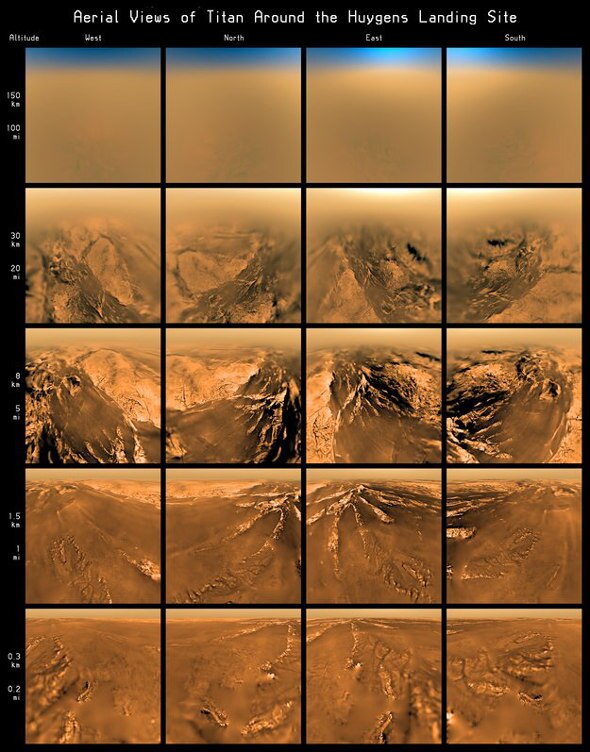Create a free profile to get unlimited access to exclusive videos, sweepstakes, and more!
Ten Years on Titan

Ten years ago today—Jan. 15, 2005—humanity reached out and touched another world. And it was a doozy.
It was Titan, the largest moon of Saturn. The Cassini spacecraft, still on its way to entering orbit around the ringed planet, had already dropped a small probe named Huygens—named after Dutch astronomer Christiaan Huygens, who discovered Titan—to go their separate ways. Huygens was aimed at the monster moon (bigger than the planet Mercury!), and on Jan. 5 began its descent.
Titan’s atmosphere is mostly nitrogen and twice as thick as Earth’s, so Huygens used that to slow initially, then used parachutes to drop safely down to the surface. While it did, it took a lot of photos and other data to investigate the alien world. Finally, after more than two hours, it touched down, the first time a space probe had ever successfully landed on the moon of another planet.
On the YouTube channel The Mars Underground there’s a fantastic and compelling video of the descent, loaded with info, which shows you the Huygen’s-eye view of Titan as it made its way down to the surface:
Amazing! You can see the angle and size of Huygens on the left, its descent angle on the bottom left, and various data on the right. In the middle the view fills in as the camera takes its shots, and then at about 1:00 things start to pick up as the probe descends through the thick haze layer into more transparent air, close enough to see detail in the landscape which changes as the probe descends.
The sounds coming from the left speaker represent the rotation and descent angle of the probe among other things, and sounds from the right speaker represent various instruments taking data, as well as how solid the uplink connection is to Cassini (which acted as a receiver, then sending the Huygens data back to Earth). The show notes on the YouTube page have the details. But it was peculiar and sad to hear the uplink tone die as communications with Cassini were lost when the spacecraft set in Titan's sky as seen by Huygens.*
We do so anthropomorphize our robot proxies.
In the decade since we’ve learned so much about this planet-sized moon! It has grains of hydrocarbon ice that blow in the wind, forming dunes, it has lakes of liquid methane and ethane (with features in the lakes that change with time), it has weather. It has a methane cycle, which is the analog to the water cycle on Earth; river channels are clearly seen leading downhill to flatter surfaces. And while it may be frigidly cold there to us—180 below 0 Celsius—for methane that’s near the triple point where it can be a solid, liquid, and gas, just like water on Earth.
And the surface is lousy with carbon-based molecules. Hmmmm. It’s not completely nuts to wonder if life could have arisen on this bizarre world.
We’ve yet to truly explore it, too. Huygens only saw a tiny bit of it close up, but there are 80 million square kilometers of moon yet to see. Someday we’ll go back to this vast, mysterious place and get a much, much better look. What will we find when we do?
Correction, Jan. 14, 2015, at 16:45 UTC: I originally wrote that contact was lost when the batteries died, but it was actually when Cassini "set" over the horizon of Titan. There's more to this amazing story, too: Emily Lakdawalla has the details (of course).
Correction, Jan. 15, 2015, at 02:45 UTC: I originally wrote that Titan was smaller than Mercury, but it's actually slightly larger.


























